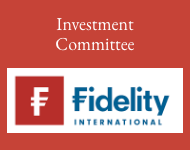Emma Moriarty, Portfolio Manager, CG Asset Management, considers the implementation of tariffs by the US and retaliatory ones from other countries, and the tough decision facing the UK Chancellor’s regarding cuts or taxes and how the bond market may react.
Recent weeks have seen a deluge of announcements on tariffs. These have come principally from the Trump Administration but now include an increasing number of statements of retaliatory intent from the governments of China, Canada, Mexico and the European Union. These announcements all support the following conclusion: the global economy will see higher inflation and lower growth in the future than would otherwise have been the case.
Unsurprisingly, given the extent of the noise around tariffs, markets have had difficulty digesting the proposals. In the first instance: Immediately after Trump’s election victory, USD strengthened. This was off the back of expectations that tariffs would lead to a higher path of inflation and interest rate expectations relative to all major trading partners. The USD retraced some of these gains as markets began to reappraise those expectations.
Other major currencies have depreciated in response to tariffs. This is not limited to those of countries which have been targeted directly by tariffs (e.g. CAD). Indeed, some of the largest moves have been felt by currencies which have a major trading relationship with a partner country which has been impacted by tariffs, e.g. AUD and NZD depreciated off the back of weaker expectations of China’s growth.
Equity markets, particularly in the US, have shown volatility without clear direction. After the round of tariffs on steel and aluminium were announced, S&P futures sold off but quickly bounced back as market scepticism emerged as to whether they would eventually be implemented. More broadly, investors have continued to emphasise holding gold as a hedge against tariff-driven inflation and against wider geopolitical risk.
The UK government’s economic plan has come back into focus following reports that OBR has warned the Chancellor that the government is on course to breach the fiscal rules set for itself last October. The reported reason for the breach is that the UK is on a lower growth trajectory than previously forecast, which puts the government at risk of breaching its ‘current surplus’ rule.
Similarly, interest rates are also materially higher than at the time of the previous forecast. This comes ahead of the Chancellor’s Spring Statement. She is faced with an increasingly urgent choice: either cut spending (practically and politically difficult) or raise taxes (a breach of an election promise). However, if left unresolved, the problem becomes self-reinforcing: lack of market confidence in the government’s fiscal position will increase government bond yields, making the fiscal rules harder to meet.
Against this backdrop our positioning remains defensive. We have allocated circa 32% in our multi-asset funds to index-linked bonds. Within index-linked, we favour US TIPS over UK index-linked bonds, a function of currency, yield, and relative economic outlook. We take a cautious view of risk assets (c. 31% of the multi-asset portfolios, including gold). This is driven by concern about the outlook for corporate profits in a higher inflation / lower growth environment. The remaining c.33% of our asset allocation is in dry powder (cash, treasury bills and short-dated government bonds and corporate credit).
Main image: martin-olsen-szfPB4X-FWk-unsplash





































